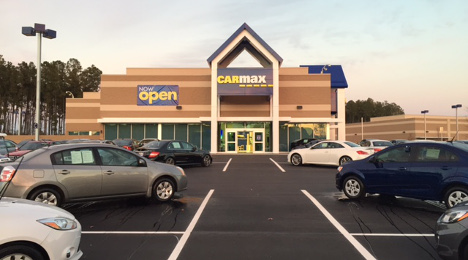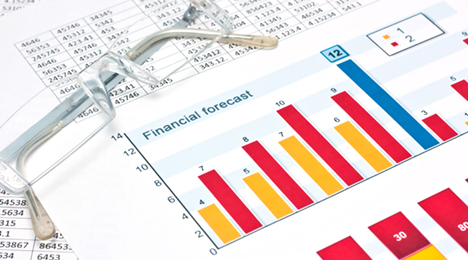Used-car prices are expected to fall more than 8 percent over the next three years, according to an analysis released last week by RVI Group.
The firm attributes the projected 8.2-percent drop in real used-vehicle prices (i.e. residual values) to growth in three key areas: supply, competition and incentive spending.
“RVI forecasts an increase in leasing through 2018 and a growing supply of used vehicles in the market through 2019,” the firm said in a summary of the latest RVI Risk Outlook report.
“In particular, the growth in lease penetration will contribute to the supply of used vehicles as off-leased vehicles will begin to enter the market. In addition, we expect growing competition in the new vehicle market,” it added. “The level of incentive spending will increase due to these changing dynamics in the auto industry.”
To provide a sense of just how strong off-lease supply has become, consider the data shown in RVI’s lease supply index, which it uses to measure off-lease supply.
The index reading in February was up 16 percent year-over-year, and it’s expected to continue climbing, RVI said. That’s driven by how much leasing has jumped in the past two years. Citing Polk data, RVI points out that leases comprised 21.5 percent of all new-vehicle sales in 2015, including a 22.4-percent penetration rate in the fourth quarter.
It was the early 2000s the last time lease rates were that strong, RVI said, showing data that leases have trended upward since 2009.
CarMax hosted its quarterly conference call to share results of its 2016 fiscal year on the same day that Cox Automotive chief economist Tom Webb conducted his regular phone gathering to discuss a wide array of industry topics.
It just so happened that call participants asked Webb about how CarMax manages to keep its used-vehicle margins strong while investment analysts also questioned CarMax chief executive officer Tom Folliard about how the declining Manheim Used Vehicle Value Index would impact performance of the dealership chain.
As he often does, Webb’s presentation before taking questions included a slide where he tracked the retail gross margin on used vehicles generated by the seven publicly traded dealership groups, which includes CarMax. Webb’s latest information put the sales-weighted average at a level near 8.5 percent, stemming from a streak of declines covering seven of the past eight quarters.
An investment observer wondered if the latest drop from a recent high above 11.5 percent spotted in 2009 might be even more dramatic if CarMax’s performance was taken out of the analysis. CarMax reported at the close of its 2016 fiscal year that gross profit per unit sold came in at $2,159, down by $20 a year earlier.
Just for comparison, AutoNation closed 2015 with a 6.7-percent drop in used-vehicle gross profit as the reported figure was $1,577. Over at Sonic Automotive, the company indicated its used-vehicle gross slipped 3.1 percent year-over-year to come in at $1,384 in 2015.
To explain CarMax’s performance, Webb said, “In fourth quarter of last year where same store sales went down, that was a reflective of the fact that they wanted to hold gross.”
Webb reiterated that his analysis “is sales-weighted and (CarMax has) the volume. It would look worse if you pulled out the other six.”
So why are the other six dealer groups so different from CarMax in terms of used-vehicle margins?
Webb said, “Their philosophy is to a certain extent give away the razor to sell the blade because they’re putting vehicles in operation and hoping for very high margins on the service side.”
Earlier in the morning when CarMax conducted its call, Folliard explained how the company can keep its margins much higher than the rest of the industry.
“It’s an overall inventory management process for us, and it starts with the by having the right car in the right place at the right time,” Folliard said. “That allows us to be able to deliver an exceptional value to the customer.”
Folliard also noted CarMax sometimes avoids inventory pieces that are what company personnel might think are “a little expensive.” During the previous quarter of CarMax’s fiscal year, a segment that fell into that description was full-size SUVs, “so we didn’t buy as many and that allows us to manage our margin.”
The CarMax boss also mentioned how the company transfers vehicles within its dealership network depending on buyer requests. That process happens during about a third of its retail sales, according to Folliard.
“That allows us to turn our inventory quickly,” he said. “I think our turns help us manage our margins pretty well.”
And if CarMax spots a trends where a particular model or segment rises in demand? Folliard explained how the company can evaluate margin variability.
“We are big enough now that we can test pockets and markets and different types of product all across the country and learn a lot about price elasticity,” Folliard said. “And then that’s reflected in the ultimate margins that we achieve and the sales that we get.
“I am very pleased with the quarter and with the results and a positive comp based on one of our tougher comparisons last year,” he continued. “And yes, I think we can get better at this as time goes along. I think we are better at managing our inventory and our margins than we were a few years ago.
“And with continued use of external and internal data and training and development of the process, I think we will just continue to get better at it. So I am pretty pleased with the progress that we have made and the results we have been able to deliver,” Folliard went on to say.
Later in CarMax’s call, the topic of margins returned. But this time, it was in connection with the Manheim Index, which now has dropped for three consecutive quarters. An industry observer wanted to know if CarMax’s retail margins could move even higher if wholesale vehicle prices continue to soften.
“When the Manheim Index goes down and we can buy cars cheaper, we want to give our customers a better deal,” Folliard said. “We have chosen whether it’s right or wrong to not increase our margins when our prices go down because we want to give our customers a better deal.
“We are building our business over a very, very long period of time,” he continued. “We want (customers) to leave and say, ‘Why I got a really fantastic deal. The next time I buy a car, I want to buy it from CarMax.’”
“You can argue with our motives but when our ability to buy a car is cheaper, we have chosen to pass those savings onto our customers as opposed to taking it into margin. That’s just what we have done,” Folliard went on to say.
The CarMax CEO pointed to how the company performed during the last recession.
“Our average retail price dropped by over $2,000 in three months and we kept our margins and we bought cars cheaper over that period of time by that same amount and we chose to keep our margins flat,” Folliard said. “That’s just the decision that we made.
“I think we gave a whole bunch of customers a great deal and hopefully made customers for life,” he continued. “That’s how we have chosen to run our business. It doesn’t mean that we will do it exactly that way going forward. But when we have the ability to buy cars cheaper, we pass those savings onto our customers.”
Cox Automotive chief economist Tom Webb looked to quell any negative reactions because wholesale used-vehicle prices declined again in March, marking the third consecutive drop.
The streak left the Manheim Used Vehicle Value Index — a measure of wholesale prices adjusted for mix, mileage and season — at a reading of 122.5 in March, representing a decrease of 1.6 percent from a year ago.
In his commentary posted on Manheim Consulting’s website, Webb said, “Although wholesale prices have fallen every month in 2016, this should not be looked at with alarm. After all, it has long been anticipated that pricing would ease this year.
“Additionally, evolving industry patterns and practices may be muting what used to be a very strong spring bounce in pricing,” he continued. “Remember, wholesale prices did increase somewhat this year before the seasonal adjustment, and the large seasonal adjustment factor is based on past history, which may be less relevant in today’s market.
“Nevertheless, fundamentals do suggest that the current trend will prove longer lasting than the several short cycles that we have already experienced since the May 2011 peak in the Manheim Index,” Webb went on to say.
Manheim reported that Q1 wholesale pricing trends for vehicle segments included:
• Compact car prices were down 9.1 percent in March over the same period last year and continued to underperform the overall market due to extremely competitive pricing of new vehicles and more consumers shifting to small crossovers.
• Midsize cars, typically one of the weaker segments, showed a somewhat modest decrease of 1.7 percent compared with other car classes over the same period last year.
• Pickups and vans showed mixed results as pickups represented the only uptick of all major market classes with a 7.4 percent increase while vans were down 2.4 percent. The increase in pickup pricing can be partially attributed to lower gas prices.
• Luxury car wholesale pricing performed poorly this quarter after stabilizing at the end of 2015 and was down 3.4 percent compared with last March.
• SUVs and CUVs decreased 2.0 percent compared with last March despite the continued increase of vehicle miles of travel thanks to lower gas prices and favorable lending.
“While fundamentals suggest the current pricing trend will last longer than the earlier downturns in pricing in this cycle, the year as a whole is setting up well and we may be able to avoid extreme volatility in wholesale pricing,” Webb said in a separate press release Manheim sent to the media.
For rental risk units, Manheim noticed auction sales rose in March as higher new unit sales into rental allowed the retiring of older units in the fleet. The average auction price — adjusted for broad shifts in mix and mileage — rose 1.0 percent from February, but was down 7.3 percent from a year ago.
Manheim also mentioned vehicles in the $7,000 to $10,000 price range continued to face the most competitive pricing pressure in the first quarter while vehicles valued above $15,000 proved better. The percentage growth in auction volume was slanted towards units above $25,000.
In his commentary, Webb described it as “a twist on Say’s law — units forced back into the wholesale market must then be retailed.” He indicated that preliminary numbers suggest that dealers had another strong used vehicle sales month in March.
According to the National Automobile Dealers Association, both franchised and independent dealers had double-digit gains in used-vehicle sales for the first two months of 2016. Additionally, with an increase of 215,000 jobs in March, total U.S. employment has risen by 13.9 million jobs over the past six years.
Webb insisted the stability in the labor market — measured by initial jobless claims or job openings per job seeker — provides the foundation for low risk-adjusted delinquency rates and, thus, good credit availability.
“As a testament to this, overall CPO sales were up 5.1 percent in the first quarter with March coming in especially strong with a 9.6 percent increase,” he said.
On the new-car side, Webb noted March’s new vehicle selling pace (16.5 million, and well below expectations) is hard to analyze given another two-day “selling day” adjustment, which acknowledged as “a quaint notion, at best.”
For the quarter, Webb recapped that the new-vehicle SAAR came in at 17.1 million.
“The question is whether manufacturers will be content with a full-year sales tally similar to last year or they will push for a more aggressive target,” Webb said. “We’re optimistic they will remain disciplined given that it is they who, through their captive finance arms, hold the residual risk on some 10 million off-lease units outstanding.”
Continuing a theme in the Black Book Market Insights report series, wholesale truck prices are softening amid the spring selling season’s peak.
And, really, the early part of 2016, in general.
This downturn for many segments so far this year runs contrary to the trends spotted in the second half of last year, according to Black Book — and the last three weeks, the softness in values has been particularly noticeable, the company said, for segments like compact utilities and pickups.
A few truck categories are, as Black Book senior vice president of automotive valuation and analytics Anil Goyal put it, “facing the inevitable.”
For trucks, the three-week rate of decline in values has been 0.35 percent. For cars, it has been 0.13 percent. Last week, the decrease for car values was 0.04 percent. For trucks, it was 0.3 percent.
“Some truck segments are facing the inevitable,” Goyal said in the report. “Half of all truck segments declined at a higher rate than the luxury car segment, the cars’ worse performing weekly segment.”
So, what does Goyal mean by “inevitable?” Well, the strength they’ve shown in recent times won’t last forever, Black Book explained.
With additional truck supply hitting the market (which has already started to happen in 2016), prices will fall, the company said.
One other nugget from this week’s report: two car segments (compacts, up 0.4 percent; sporty cars, up 0.05 percent) actually increased in value last week. The compact car, in particular, had its highest weekly retention in more than a year. Aside from the flat subcompact crossover, all truck segments were down.
NADA Used Car Guide executive analyst Jonathan Banks frequently referenced the “reversal of a market” when he discussed nearly a half dozen different topics during his news conference on Friday to kick off the NADA Convention & Expo.
Banks told the media and other industry observers that the supply of used vehicles, credit conditions for buyers and new-vehicle incentives will reverse course from where they have stood for the past five years.
Beginning with supply, Bank indicated the amount of vehicles in the used market will increase significantly this year.
“We’re looking at a surge of about 800,000 vehicles coming off their leases this year,” Banks said. “Most of that volume will be dominated by compact and midsize cars with midsize and compact utility volume considerably higher as well.”
As a result of the increase, NADA UCG noted that late-model supply is forecasted to hit its highest level since 2008 and will be the biggest drag on used-vehicle prices this year.
So how will the industry handle all those vehicles that eventually will land in dealership inventory? Banks touched on the availability of consumers to secure financing for a purchase.
Banks projected credit conditions will likely reverse this year even though they are currently solid. At some point, however, Banks thinks the Federal Reserve will follow up its December decision to increase its target funds rate.
As a result, NADA UCG predicted that new- and used-vehicle loan rates should increase “subtly.”
Like credit and supply, Banks mentioned new-vehicle incentive spending is forecasted to switch direction this year.
For the past five years, NADA UCG noticed used vehicle prices have been “very strong.” Banks described a low used-vehicle supply and “fantastic” credit conditions contributed to “stable” used-vehicle prices
But as a result of changes to both supply and credit, NADA UCG suggested that OEMs will likely be more aggressive in their incentive spending.
Banks explained the outcomes of the reversal in used-vehicle market trends that will contribute to an expected 5 to 6 percent decline in used prices. Among them, depreciation as a result of higher incentive spending, will likely be a key outcome of the changed market, according to the NADA UCG expert.
Banks went on to mention steeper depreciation will increase the amount of time finance companies and consumers are in a negative equity position. He pointed out that this situation makes it harder for dealerships to sell vehicles in the future and raises the risk of higher incentive pricing.
In general, NADA UCG suspects that depreciation will increase most for trucks and utilities due to sharper increases in supply, however overall declines will be less than on cars.
In one scenario, Banks explained how the number of leases taken instead of traditional financing has exploded over the past several years. Banks pointed out the explosion can partially be attributed to high vehicle retention values as they keep payments low, despite higher new vehicle prices.
If new-vehicle prices are kept low with bigger incentives, Banks emphasized they will become a drag on used-vehicle prices moving forward.
“The big question is how much will OEMs increase incentives to cover the added expense? The size of the lease market would cost the industry hundreds of millions of dollars for midsize utility vehicles alone,” Banks said.
NADA UCG finalizes integration with MonroneyLabels.com
A recently signed deal between NADA Used Car Guide and MonroneyLabels.com created what the companies contend is the fastest and most accurate way for dealers to reproduce vehicle window stickers containing the NADA Values Online product.
As a result of the agreement between the two companies, users of NADA Values Online can print out an accurate, prepopulated, VIN-specific MonroneyLabels.com window sticker — which contains all the original factory options and OEM pricing of the vehicle and all on one sheet of paper.
“We are excited to work with MonroneyLabels.com on this product enhancement to NADA Values Online,” said Mike Stanton, vice president and general manager of NADA Used Car Guide
“Getting used vehicle inventory accurately priced and marketed quickly is a critical part of the selling process,” Stanton continued. “Our customers are empowered to deliver on that part of the process reliably and even more efficiently with this integration."
When asked what about the relationship between the two companies excites him most, MonroneyLabels.com chief executive officer Ned Nielsen said, "NADA Used Car Guide is one of the most trusted names in the industry, and we’re ecstatic about integrating with their leading product, NADA Values Online.
“By using our VIN-specific technology with NADA Values Online, MonroneyLabels.com will help change the way used vehicles are described, appraised and priced by giving everyone the correct factory option packages and pricing as built,” Neilsen went on to say.
Car segment values were down last week, but rate of decline has moderated quite a bit from recent weeks.
According to the latest Black Book Market Insights Report, car segments were down an average of 0.19 percent last week (volume-weighted). However, the preceding eight weeks had an average decline of 0.34 percent, Black Book said in the report.
The only car segment to show any increase was the subcompact car, which was up only marginally (0.02 percent).
“Car segments show slower depreciation with subcompact car as the only segment experiencing a slight increase in values over the previous week,” Anil Goyal, Black Book's senior vice president of automotive valuation and analytics, said in comments accompanying the report.
One nugget that stands out: in the report, Black Book points out that the ninth week of 2015 started to show some signs of a “spring market.” At least in car values, that has yet to happen.
Trucks, meanwhile, were much more in line with recent weeks. Their values were down 0.35 percent, on average. The average change in the prior eight weeks was a dip of 0.31 percent, Black Book said.
Tom Kontos called the movement an “anomaly” when ADESA Analytical Services’ monthly analysis of wholesale used-vehicle prices by vehicle model class showed that used values in February softened on sequential basis.
ADESA pinpointed the average at $10,202, representing a 0.5-percent dip compared to January, but just a modest 0.3-percent uptick relative to February of last year.
Kontos mentioned prices for cars and minivans continued to show year-over-year price declines, while SUVs/crossovers and pickups posted gains. He added that ADESA Analytical Services’ Black Book-based segmentation scheme has been revised to combine crossovers into the SUV classes, as the distinction between them has blurred.
“To me, this is another indication that growing supply are causing wholesale prices to soften,” Kontos said in a video commentary accompanying the latest ADESA data.
“February was a departure from the normal seasonal patterns that we usually see where February is a buildup toward the spring tax season in March and April where results generally favorably for wholesale prices and retail sales of used cars,” the ADESA economist continued in the video that can be viewed at the top of this page.
“We’ll be on the lookout to see if these trends reverse,” Kontos went on to say.
Kontos mentioned average wholesale prices for used vehicles remarketed by manufacturers softened by 0.5 percent month-over-month but rose by 1.6 percent year-over-year.
ADESA also noticed prices for fleet/lease consignors dropped 2.0 percent sequentially and 1.8 percent annually “as fleet/lease sales volumes rose significantly versus prior year partly as a result of higher off-lease volumes.”
The latest data also indicated dealer consignors saw a 0.5-percent price decrease versus January but a 3.2-percent increase relative to February of last year.
Kontos closed by noting data from the National Automobile Dealers Association highlighted an 11.9 percent year-over-year increase in retail used vehicle sales by franchised dealers and a 15.5 percent increase for independent dealers in February
“But both were down significantly on a month-over-month basis for the second month in a row,” Kontos said.
He also cited figures from Autodata Corp. that showed February certified pre-owned sales moved higher by 10.8 percent month-over-month and 7.1 percent year-over-year, “more than making up for January’s declines.”
ADESA Wholesale Used-Vehicle Price Trends
| |
Average |
Price |
($/Unit) |
Latest |
Month Versus |
| |
February 2016 |
January 2016 |
February 2015 |
Prior Month |
Prior Year |
| |
|
|
|
|
|
| Total All Vehicles |
$10,202 |
$10,254 |
$10,167 |
–0.5% |
1.1% |
| |
|
|
|
|
|
| Total Cars |
$8,506 |
$8,535 |
$9,074 |
–0.3% |
-6.3% |
| Compact Car |
$6,650 |
$6,531 |
$7,271 |
1.8% |
-8.5% |
| Midsize Car |
$7,667 |
$7,742 |
$8,100 |
-1.0% |
-5.3% |
| Full-size Car |
$7,378 |
$7,485 |
$8,027 |
-1.4% |
-8.1% |
| Luxury Car |
$12,899 |
$12,858 |
$13,493 |
0.3% |
-4.4% |
| Sporty Car |
$12,893 |
$12,730 |
$12,693 |
1.3% |
1.6% |
| |
|
|
|
|
|
| Total Trucks |
$12,030 |
$12,093 |
$11,409 |
-0.5% |
5.4% |
| Minivan |
$7,262 |
$7,141 |
$7,888 |
1.7% |
-7.9% |
| Full-size Van |
$12,429 |
$12,120 |
$12,155 |
2.6% |
2.3% |
| Compact SUV/CUV |
$10,615 |
$10,568 |
$10,542 |
0.4% |
0.7% |
| Midsize SUV/CUV |
$10,663 |
$10,758 |
$10,047 |
-0.9% |
6.1% |
| Full-size SUV/CUV |
$12,107 |
$12,265 |
$11,422 |
-1.3% |
6.0% |
| Luxury SUV/CUV |
$17,758 |
$17,923 |
$17,719 |
-0.9% |
0.2% |
| Compact Pickup |
$8,370 |
$8,268 |
$7,683 |
1.2% |
8.9% |
| Full-size Pickup |
$15,298 |
$15,209 |
$13,777 |
0.6% |
11.0% |
Source: ADESA Analytical Services. January revised.
Note: Black Book revised segmentation to combine crossovers into the SUV classes as the distinction between them has blurred.
Remember February 1995?
Bill Clinton was in his first term as president. TLC was topping the Billboard Hot 100 chart for most of the month, according to Billboard.com. UCLA was a couple months away of running the table in the NCAA Tournament.
And it was the last time used-car prices dropped from their January level.
Until last month, according to NADA Used Car Guide.
The division of J.D. Power said February wholesale prices of vehicles up to 8 years old increased sequentially every year from 1996 through 2015.
But last month, their prices fell close to 1 percent.
NADA Used Guide said in its latest Guidelines report that part of the decline was due to stronger than usual later-model volume gains. In fact, there was approximately a 20-percent sequential spike in auction volume for 2014 and 2015 model-year vehicles.
Jonathan Banks, executive analyst for NADA Used Car Guide, said in the analysis: “While it's normal for volume to grow over the period, the rise was four times larger than what occurred on a like-model age basis the past two years.”
With that price softness in February came a downward movement in NADA Used Car Guide’s seasonally adjusted used price index. It was 118.6 in February, down 3 percent month-over-month.
Not since November 2009 has any month-over-month decline been that large.
Year-over-year, the index fell 4 percent from last February’s reading.
And for that 1990s flashback, Auto Remarketing won't go into the diverging opinions on another Clinton in the White House. But let's be fair: TLC and UCLA are still remembered by many as the most dynastic of acronyms.
Perhaps spring isn’t ready to bloom just yet in the auction lanes.
In this week’s Black Book Market Insights report, analysts acknowledged “no spring market lift so far,” as data from the month of February showed most car segment retention has generally continued to perform weaker than that of trucks.
Interestingly enough, Anil Goyal pointed out this pattern has not been entirely consistent across the board with a few truck segments showing great weakness and some cars showing strength.
“With high supply and low demand of small cars, we are not seeing the typical seasonality lift in values. On the other hand, crossover/SUV segments continue to get more interest from the buyers,” said Goyal, who is vice president of automotive valuation and analytics.
Looking at volume-weighted prices, Black Book reported overall car values decreased by 0.31 percent last week. The report indicated this figure is close to the average depreciation rate of 0.36 percent seen in the previous eight weeks.
Analysts mentioned prices in the full-size car, midsize car and near-luxury car segments performed the best among cars segments, changing in value by 0 percent, -0.2 percent and -0.2 percent, respectively.
Again based on volume-weighted prices, Black Book noticed overall truck values decreased by 0.26 percent last week. This reading is better than the average depreciation rate of 0.36 percent seen in the previous eight weeks.
Black Book went on to highlight all non-luxury crossover/SUV segments performed well, declining less than 0.22 percent last week. Full-size vans values rose a little, ticking up by 0.12 percent.
Black Book representatives in the lanes last week gathered comments from dealers that reflected the sentiment that perhaps the spring market is yet to bloom.
In Florida, the chatter was “Buyers said they paid up for good cars today but only a little more than they expected.” Meanwhile in Michigan, the summation was “Tough sale today with 12 inches of fresh snow but the market trend in this area is up from last week.”
Over in California, “Utilities, 4x4s and high-end vehicles are in most demand at this location, while in Texas, “No bargains today. It seemed that most all segments were in demand.”
A Tennessee observer described the scene as “A good sale all around today with trucks and SUV’s continuing to lead the way.”
Finally, what happened in Arizona might summarize last week’s activity as the lane talk was, “The market trend in this area is still a bit slow but is showing signs of a possible uptick.”
The spring tax season isn’t bringing with it the strong prices in the lanes it normally does.
And this trend is particularly evident when looking at depreciation for the month of February. According to Black Book data, the average price of a used vehicle for model years 2010-2014 fell by 1.1 percent last month.
Cars dropped by 1.1 percent, while truck prices fell by 1.2 percent during the month.
All segments Black Book tracks saw less than 2.7 percent depreciation for the month in February, and even though rates are not as strong as they normally are this time of year, the car segments are beginning to pick up momentum.
“Clearly the car segments have begun to pick up momentum as we inch closer to spring, especially midsize cars and full-size cars,” said Anil Goyal, Senior vice president, automotive valuation and analytics for Black Book. “As we reach the pinnacle of spring it will be interesting to see if cars perform similarly to last year or if they experience less retention during the tax season.”
Trucks, on the other hand, are seeing some market correction due to the very strong prices some segments held on to over the course of 2015.
Full-size pickups saw the highest depreciation out of all segments for February with rates dropping by 2.7 percent. The segment, which includes units such as the Chevrolet Silverado and Ford F-150, entered March with an average segment price of $22,502, which represents a 6.3-percent drop from a year ago.
For comparison, on the car side of the market, nineteen different segments saw less than 2-percent depreciation for the month.
The top three performing segments were the full-size cars (-0.3 percent), compact crossover/CUVs (-0.1 percent) and midsize cars (no change from prior month). The full-size car segment finished the month with an average price of $12,674, which is down 16.3 percent year-over-year. And vehicles in the compact crossover/CUV segment ended February with an average price of $12,978, which was down 1.46 percent year-over-year.
Midsize cars led all segments with prices remaining stable with January rates. The segment, which includes vehicles like the Ford Taurus and Honda Accord, finished last month with an average segment prices of $9,595, which is down 18.8 percent from the same period last year.











